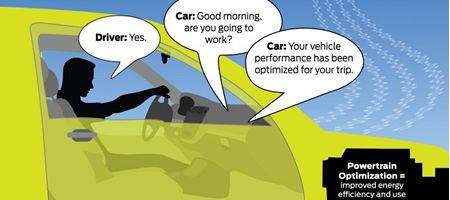Ford is using Google’s Prediction API to try and predict driver behavior and optimize performance.

The API, released last year, can convert information on a driver’s actions in the past into real-time predictions, such as where they’re likely to be headed at a particular time of day. Ford hopes to take such cloud-stored data and use it to enable a vehicle to perform as well as possible for any given predicted route.
“The Google Prediction API allows us to utilize information that an individual driver creates over time and make that information actionable,” says Ford technical expert Ryan McGee.
“Between Google Prediction and our own research, we are discovering ways to make information work for the driver and help deliver optimal vehicle performance.”
Once a vehicle owner starts using the service, an encrypted driver data usage profile could be built, based on routes and time of travel.
When the vehicle starts, Google Prediction would use historical driving behavior to predict the most likely destination, check with the driver that it’s correct, and then optimize driving performance for the journey.
Thus, a plug-in hybrid could program itself to optimize energy usage over the total distance of the route, in order to preserve enough battery power to switch to all-electric mode when traveling within an EV-only zone, for example.
“Once the destination is confirmed, the vehicle would have instant access to a variety of real-time information so it can optimize its performance, even against factors that the driver may not be aware of,” says McGee.
Because of the large amount of computing power necessary to make the predictions and optimizations, an off-board system that connects through the cloud is needed.
The company’s keen to assure drivers that their privacy will be protected.
“We realize that the nature of this research includes the use of personal data and location awareness, something we are committed to protecting for our customers in everything we do,” says system architect Johannes Kristinsson.
“A key component of this project is looking at how to develop secure personal profiles that will ensure appropriate levels of protection and specific data use only by the driver and the vehicle to deliver the best driving experience.”






